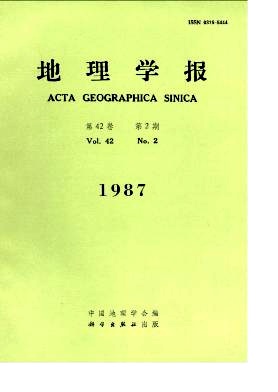Cai Yuping
This paper mainly presents an introduction of dynamic research on territorial structural system. Territorial structure means the spacial form which is displayed on the globe by the economic and social activities of human beings. Under certain economic and social conditions, territorial structure is also the result of a spacial self-organization within the elements and subsystems in the territorial system.A satisfactory self-organized procedure has been revealed in the research of the evolutionary history of territorial structure. In the primitive fishing and hunting society a spacial scheme, controlled dispersively, was formed, along with the growth and competion. among the original tribes and clans. In the agricultural society, villages emerged in the places with the appropriate climate and fertile soil, and then expanded through a neighboring effect and transition diffusion. Space competing produced a more complex order structure. Up to industrial society, the industrial cities occupied the important position, the final spacial structure was composed of the metropolis, intermediate cities and satellite towns.Furthermore, the author draws up a conclusion on the general rule of territorial structural evolution, based on historial study, i.e, an orderly, circulating procedure will be achieved in the end through mutation, chaos, diffusion and competition. The more the procedure debelops, the more complex territorial structure is, the more perfect its function is and the more stable it becomes.Finally, the author puts forward a basic model of territorial macrostructure in the information society by combining the scientific and technological revolutions, which is inspired by the garden city theory set by E. Howard.The author takes the new kind of scientific city, the main part is the fourth undertaking, as the basic cell of human activities. A lot of these cells are linked by modern communication and transportation networks, which form the functional area. Different functional areas become a mosaic in the territory, by which it constitutes the territorial system with the organic character.Another contribution of this paper is that the author had put the original locational models, (agriculture location theory, industry location theory, market competition theory and central place theory etc.) on the historical system of territorial structure evolution, which not only deepens our understanding of these theories, but also has developed new location models, for example, the original agriculture location theory and the science city arrangement theory.
